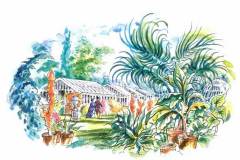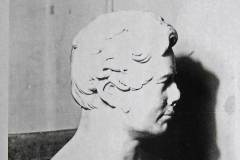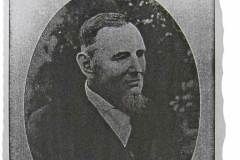Alderman, Nurseryman & Horticulturalist
William Masters and his father, also William Masters (died 1834), were both Canterbury nurserymen. Poll books suggest that the elder William Masters conducted his business in the late 18th century in St Dunstan’s but by the early 1800s had moved the business to St Peter’s Street, on Pound Lane car park and some of the ground now covered by Barratt’s car showrooms. One corner of the Barratt’s showroom had earlier belonged to James Six, inventor of the max-min thermometer. The business off St Peter’s Street traded initially as St Peter’s Nursery Ground (Kent Gazette 1816), later as Master’s Botanical Garden and Nursery Ground (Stapleton’s Directory 1838), and later still as Master’s Exotic Nursery (Image 1). An advertisement in 1809 offered 20,000 Kentish hop sets for sale from the St Peter’s Street address. This area included two water springs, uncovered by a Dr des Moulins in the early 1690s, whose healing properties had been long recognised. An early 18th century letter refers to successful cures of asthmas, coughs, catarrh, consumption, gout, scurvy, vapours, ‘all sorts of stoppages’, scabs and itch. The output of one of the two springs, known as chalybeate waters, had an oily surface, felt ‘very fat’ between the fingers, smelt like sulphur, tasted ‘masculine and austere’, and coloured the tongue black. One spoonful apparently had the effect of a ‘moderate dose of opium’. The area was later planted with palms, exotic species, and walkways. A plant catalogue published in 1831 includes over 700 roses, 200 dahlias, 60 pansies and 80 camellias. By the early 1870s Masters had been joined by a business partner John Watson Kinmount. When Masters died in 1874 Kinmount brought his brother-in-law James Kidd into the firm. Two years later Kinmount died, leaving the business in the hands of his widow Euphemia and her brother Kidd. A press report in 1884 suggests that the mineral springs had been ‘neglected for half a century’ but might be re-opened. The following year the city analyst advised against this. Masters had a second nursery beside the Stour river, opposite the cavalry barracks on the road to Sturry. This supposedly benefited from the barracks sewage, which was destined for settling tanks in the nursery. (Some writers have confused the two sites to locate the sewage problem erroneously under the Exotic Gardens.)
In addition to his business interests, William Masters (junior) made his mark on the city in a variety of ways:
- he was active as a Liberal in local politics, particularly in securing changes through the Municipal Reform Act (1835)
- he was instrumental in setting up the Canterbury Philosophical and Literary Institution in Guildhall Street (founded 1825), and became curator of their museum (1823-1846)
- he served as a JP from 1837
- he became an alderman for Westgate ward and during 1840-1841 served as city mayor
- he arranged for the supply of trees and shrubs, at his own cost, to improve the appearance of the Dane John gardens
- a bust of William was placed in the city museum (Image 2)
- throughout his life, William wrote for specialist journals and corresponded regularly with horticulturalists and academics, including with the botanist Sir William Hooker
- William’s son Dr Maxwell Masters (1833-1907) (Image 3) also achieved success as a horticulturalist – he was elected member of the Linnaean Society in 1860 and Fellow of the Royal Society in 1870 and inaugurated the annual Masters Memorial Lectures at the Royal Horticultural Society
Sources: advice and information from Sylvia McNally; obituaries in Kent Gazette 29 September 1874 and Whitstable Times & Herne Bay Herald 3 October 1874; for hop plant advertisement see Kentish Gazette 3 February 1809; for re-opening in 1884 see Newcastle Courant 19 September 1884; for healing qualities of the chalybeate waters see Proceedings of the Royal Society 1854; William Masters’ plant catalogue was published with the title ‘Hortus Duroverni’ (1831); also Gostling (1825 and 2006), Ward (1843) and Cowper (1888)
DL



